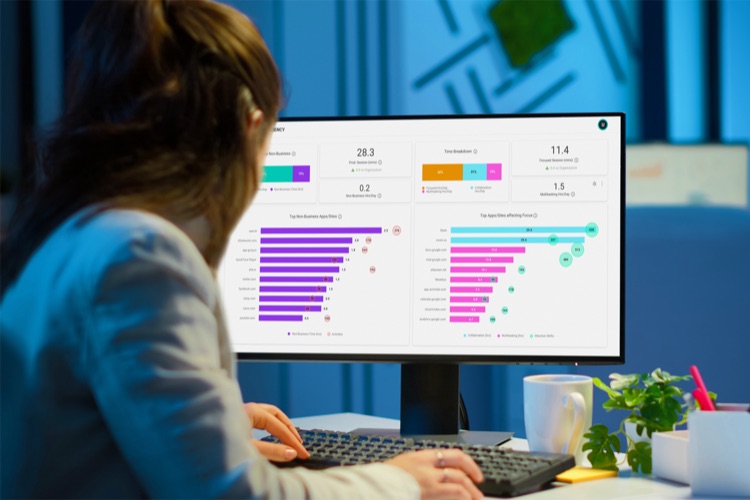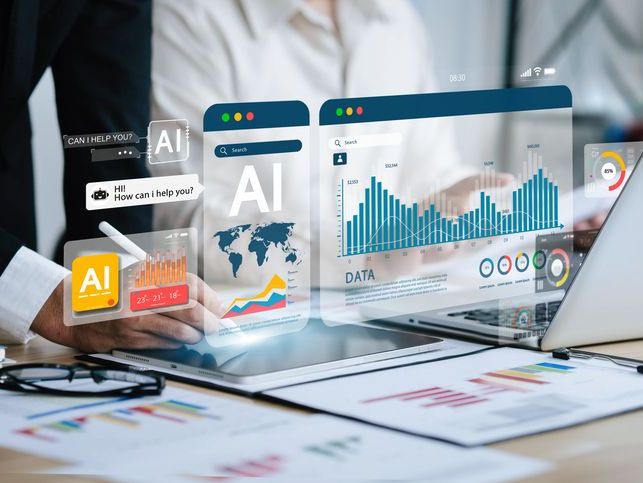If you do a Google search for “Workforce Analytics”, you will be served up primarily HR-related topics. Why is that? The term “Workforce Analytics” is often used by many HR-specific entities and organizations because it describes the type of data collection and analysis HR departments conduct with regard to their workforces. The usage of this data has been applied primarily to measuring employee performance, talent management and retention efforts. However, businesses are seeing the value of workforce analytics beyond HR. So, let’s expand its application beyond HR to explore how it can be leveraged by other areas of a business. Workforce analytics can be measured by any department, any function, across teams, and by employees themselves to understand productivity, engagement, collaboration and more. This is the difference between modern Workforce Analytics, like ActivTrak’s Workforce Analytics Software, and traditional HR analytics software.
What is Workforce Analytics to HR?
Let’s first understand how HR departments use workforce analytics (and also referred to as people analytics). Typically associated with Talent Management and Employee Performance functions, the primary focus is to collect people data with software that uses statistics and algorithms to analyze employee data. The areas of particular interest are data collection and analysis regarding recruitment, retention, employee performance, and skills gaps. There are other applications of the data, but these are the most common.
Typical questions HR professionals seek to answer using workforce analytics data are:
- Are we retaining our best talent?
- What are the characteristics of our top performers?
- Who is at risk of leaving?
- What training has been most effective?
- Where are there areas to save on labor costs?
HR professionals sometimes use workforce analytics as a tool to gauge productivity, but often with the lens of identifying top performers and their productivity attributes. Many HR workforce analytics projects today are still focused on the individual level. Learning the characteristics of top performers and tracking retention of top talent are the priority use cases of workforce analytics in HR.
How is Workforce Analytics Evolving?
Today, operations and business managers want to understand how to improve performance as well, but through a different, more macro, lens. These leaders are often looking for ways to streamline and improve processes and employee workflows to achieve organizational goals more effectively and efficiently. They care about team productivity and employee engagement as well.
In 2020, employee engagement and retention have become more important to organizations than in years past. A recent report by Quantum Workplace cited engagement statistics that can impact business and that “highly engaged teams show 21% greater profitability.” The workplace has become far more distributed with remote workers collaborating and working together across the world. Especially in the wake of COVID-19, it’s now critical to ensure teams are connected and engaged. This has made the way employees work together different and challenging because they have had to rapidly adapt to new approaches of working effectively while remote. These dynamics have shifted the focus for managers from “are you working?” to “how are you working?”, thus paving the way for new and innovative use cases for workforce analytics.

How Can Workforce Analytics Help Organizational Teams Other Than HR?
Using Workforce Analytics as a means to understand a workforce’s productivity, engagement, and collaboration for both employers and employees is the new normal. Having the ability to view and analyze relevant analytics in real-time for any department, any function across teams, and even by the employees themselves has become a competitive advantage. Beyond HR, workforce analytics provide organizations key user behavior insights that help business leaders understand HOW employees and teams work. Backed by unbiased data collected directly from the source–the users as they are doing their work–managers can now make more informed business decisions.
These insights pose opportunities for organizations to use the data to ultimately achieve better outcomes for both the employer and the employees. ActivTrak can help solve a variety of workforce behavior questions including:
| Workforce Analytics Areas | ActivTrak Insights |
|---|---|
| Activity & Application Usage |
|
| Productivity |
|
| Collaboration & Knowledge Management |
|
| Operational Compliance |
|
Workforce Analytics has evolved beyond an HR analytics software tool, and can be leveraged to improve any team, individual, or the organization’s productivity and operations as a whole. Using behavioral activity data to measure and understand employee productivity, engagement and business operations has become not only a competitive advantage, but a critical component in today’s business climate. Using modern Workforce Analytics Software like ActivTrak, can help both employers and employees alike uncover areas of opportunity. Bridge skill gaps, eliminate inefficiencies in existing processes, and boost employee productivity to improve business outcomes and achieve strategic plans, faster.
Want free access to your organization’s workforce analytics? Sign up for a free ActivTrak account today.
| Workforce Analytics Areas | ActivTrak Insights |
|---|---|
| Activity & Application Usage |
|
| Productivity |
|
| Collaboration & Knowledge Management |
|
| Operational Compliance |
|






